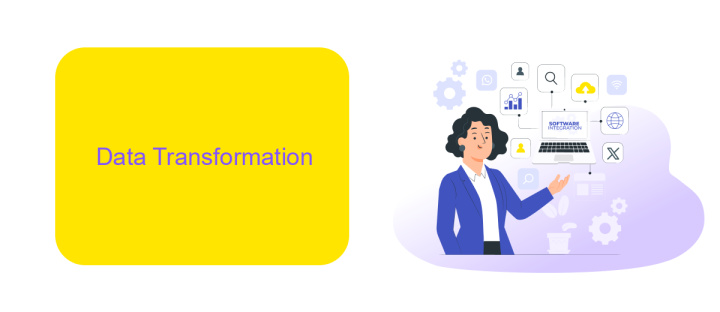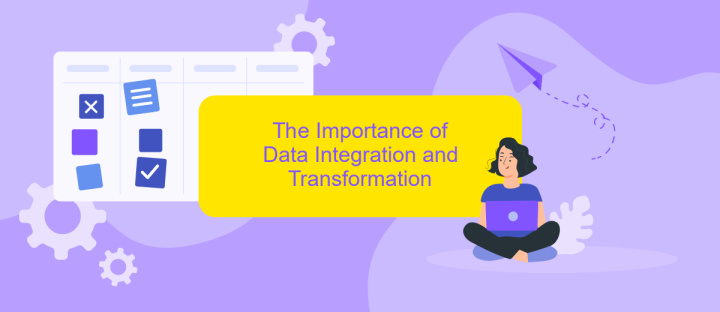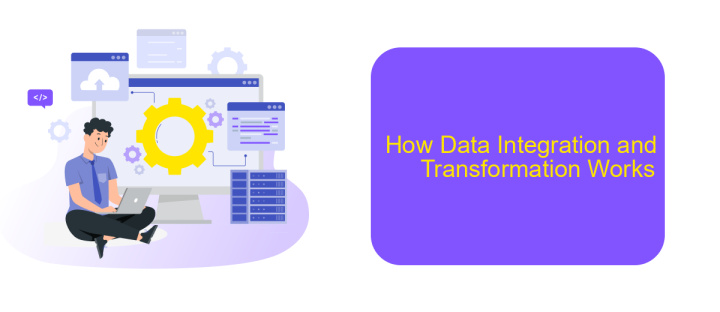Data Integration and Data Transformation
Data integration and data transformation are critical processes in modern data management, enabling organizations to consolidate diverse data sources and convert them into meaningful, actionable insights. By seamlessly merging and transforming data, businesses can enhance decision-making, improve operational efficiency, and gain a competitive edge in today’s data-driven landscape. This article explores the fundamentals, techniques, and benefits of data integration and transformation.
Data Integration
Data integration is a crucial process in modern organizations, enabling seamless data flow between disparate systems and applications. It involves combining data from different sources to provide a unified view, which can enhance decision-making and operational efficiency.
- Improved data accuracy and consistency
- Enhanced business intelligence and reporting
- Streamlined business processes
- Reduced data redundancy
- Increased collaboration and productivity
Many tools and platforms facilitate data integration, such as ApiX-Drive, which offers a user-friendly interface for setting up integrations between various applications without requiring coding skills. By leveraging such services, businesses can automate data workflows, ensuring real-time data synchronization and reducing manual data entry errors. This not only saves time but also allows teams to focus on more strategic tasks, driving overall business growth.
Data Transformation

Data transformation is a critical step in the data integration process, involving the conversion of data from its original format into a format suitable for analysis and business needs. This process includes data cleansing, normalization, enrichment, and aggregation to ensure consistency and accuracy. Effective data transformation enables organizations to derive meaningful insights and make informed decisions based on high-quality data.
Various tools and platforms can facilitate data transformation, such as ApiX-Drive, which automates the integration and transformation of data from multiple sources. ApiX-Drive provides a user-friendly interface and pre-built connectors, allowing businesses to seamlessly map and transform data without extensive coding. By leveraging such services, companies can streamline their data workflows, reduce manual errors, and accelerate the time-to-value for their data initiatives.
The Importance of Data Integration and Transformation

Data integration and transformation are critical processes in modern data management, ensuring that disparate data sources can be unified and made useful for analysis and decision-making. By integrating data from various systems, organizations can achieve a holistic view of their operations, leading to more informed and strategic decisions.
- Improved Data Quality: Combining data from different sources helps identify inconsistencies and errors, leading to cleaner and more reliable datasets.
- Enhanced Decision-Making: Unified data provides a comprehensive perspective, enabling better insights and more accurate forecasting.
- Operational Efficiency: Streamlining data flows reduces redundancy and manual processing, saving time and resources.
- Compliance and Reporting: Integrated data ensures that reporting is consistent and meets regulatory requirements.
- Scalability: With tools like ApiX-Drive, businesses can easily scale their data integration processes to accommodate growing data volumes and complexity.
Incorporating robust data integration and transformation practices is essential for any organization aiming to leverage its data assets effectively. Services like ApiX-Drive simplify the setup and management of these processes, enabling seamless connectivity between various applications and systems. This not only enhances data accessibility but also empowers businesses to unlock the full potential of their data.
How Data Integration and Transformation Works

Data integration and transformation are critical processes in managing and utilizing data from multiple sources. Data integration involves combining data from different sources, providing a unified view, while data transformation modifies the data's format, structure, or values to meet specific requirements.
These processes typically involve extracting data from various sources, transforming it to fit the desired format, and loading it into a target system. Tools like ApiX-Drive facilitate these steps by automating the integration and transformation of data, ensuring seamless data flow between applications and services.
- Extract: Gather data from multiple sources.
- Transform: Convert data into the required format.
- Load: Insert transformed data into the target system.
By leveraging platforms like ApiX-Drive, businesses can streamline their data integration and transformation processes, reducing manual efforts and minimizing errors. This enables organizations to make data-driven decisions more efficiently and effectively.
- Automate the work of an online store or landing
- Empower through integration
- Don't spend money on programmers and integrators
- Save time by automating routine tasks
Benefits of Data Integration and Transformation
Data integration and transformation offer significant benefits, enhancing the overall efficiency and effectiveness of data management processes. By integrating data from multiple sources, organizations can create a unified view, enabling better decision-making and streamlined operations. This holistic approach reduces data silos, ensuring that all departments have access to consistent and up-to-date information. Additionally, data transformation processes, such as cleaning, normalizing, and enriching data, improve data quality, making it more reliable and actionable.
Moreover, leveraging services like ApiX-Drive can simplify the setup of integrations, allowing businesses to connect various applications and automate data workflows effortlessly. ApiX-Drive's user-friendly interface and robust features support seamless data synchronization, reducing manual intervention and minimizing errors. This not only saves time and resources but also enhances productivity by allowing teams to focus on more strategic tasks. Ultimately, the combination of data integration and transformation empowers organizations to harness the full potential of their data assets, driving innovation and competitive advantage.
FAQ
What is data integration?
What is data transformation?
Why is data integration important for businesses?
How can businesses automate data integration and transformation processes?
What are the challenges of data integration?
Apix-Drive is a simple and efficient system connector that will help you automate routine tasks and optimize business processes. You can save time and money, direct these resources to more important purposes. Test ApiX-Drive and make sure that this tool will relieve your employees and after 5 minutes of settings your business will start working faster.


